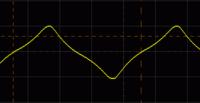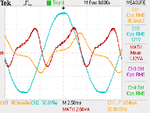smijesh
Advanced Member level 1

BUt will I be able to apply a voltage bigger than the rated one in the primary (so the core can saturate) without burning the transformer?
You can increase the primary voltage for few seconds till the waveform get distorted.





